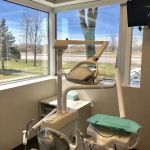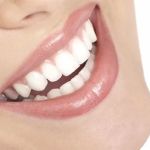How to Treat an Open Bite in Children and Adults
- Understanding Open Bites
- Causes of Open Bite
- Diagnosing an Open Bite
- Treatment Options for Children
- Treatment Options for Adults
- Preventing Open Bites
- Real-Life Cases of Open Bite Treatment
- When to See a Dentist for an Open Bite
Understanding Open Bites
Open bite is a dental condition where the upper and lower teeth do not come together properly when the mouth is closed. This leaves a noticeable gap between the front or back teeth. Open bites can be classified into anterior (affecting the front teeth) or posterior (affecting the back teeth). This condition can lead to discomfort, difficulty chewing, and problems with speech.
Both children and adults can experience open bites, but the causes and severity may differ between age groups. In children, open bites are often associated with habits such as thumb sucking or prolonged use of pacifiers, while in adults, open bites can result from misalignment, teeth grinding, or jaw issues.
Causes of Open Bite
There are several causes of open bite, and it’s important to identify the underlying issue in order to determine the appropriate treatment. Common causes include:
- Thumb Sucking: For children, thumb sucking can lead to a habit that interferes with proper tooth and jaw alignment. Prolonged thumb sucking may cause the upper and lower teeth to fail to meet when the mouth is closed.
- Pacifier Use: Similar to thumb sucking, long-term use of a pacifier can prevent the teeth from aligning correctly, especially if the pacifier is used beyond the toddler years.
- Teeth Grinding (Bruxism): Adults who grind their teeth, especially at night, may develop an open bite. Grinding can cause wear on the teeth and affect jaw alignment.
- Jaw Misalignment: Some people may have a naturally misaligned jaw, which leads to an open bite. This misalignment can cause discomfort when eating or speaking.
- Genetics: In some cases, open bites may be inherited, with family members exhibiting similar dental issues.
Diagnosing an Open Bite
Diagnosing an open bite is typically done through a physical exam by a dentist or orthodontist. The dental professional will examine the alignment of the teeth and the functionality of the bite. They may also use X-rays or other imaging techniques to assess the jaw and tooth positioning.
In children, the dentist will monitor the development of the teeth and jaws to determine whether an open bite is forming. In adults, the diagnosis may also involve examining any other underlying causes, such as bruxism or a misaligned jaw.
Treatment Options for Children
Treating an open bite in children is often more effective when caught early, as the bones and teeth are still developing. Some common treatments include:
- Behavioral Modification: For children who have developed an open bite due to habits like thumb sucking, encouraging them to stop the habit is the first step. Behavioral therapy or devices such as thumb guards can help break the habit.
- Orthodontics: In some cases, braces or other orthodontic appliances may be used to realign the teeth and jaw. Early orthodontic intervention can help prevent more severe misalignments later in life.
- Space Maintainers: For children who lose teeth prematurely, space maintainers may be used to prevent the remaining teeth from shifting and worsening the open bite.
Treatment Options for Adults
For adults, treating an open bite may require a combination of orthodontic and surgical treatments. Common options for adults include:
- Braces: Braces are a common solution for adults with open bites. They work by gradually shifting the teeth into proper alignment over time.
- Invisalign: Invisalign, a clear aligner system, can be an effective and less noticeable alternative to traditional braces. This option is suitable for adults who want to avoid the appearance of metal braces.
- Surgical Intervention: In cases where the open bite is caused by significant jaw misalignment, surgery may be required to reposition the jaw. This option is typically considered when non-surgical treatments are not sufficient.
Preventing Open Bites
Preventing an open bite can be easier than treating it. Some proactive steps to prevent the condition include:
- Encouraging Proper Oral Habits: Encourage children to stop thumb sucking and using pacifiers at an early age. This can prevent the development of misaligned teeth and jaw issues.
- Regular Dental Checkups: Regular visits to the dentist can help detect early signs of an open bite and other dental issues. Early intervention is key to preventing worsening conditions.
- Using a Night Guard: For adults who grind their teeth at night, using a custom-made night guard can prevent further damage to the teeth and jaw.
Real-Life Cases of Open Bite Treatment
Many individuals have successfully treated their open bite through a combination of orthodontic care and, in some cases, surgery. For example, Sarah, a 32-year-old woman, had suffered from an open bite caused by misaligned teeth and jaw issues. After consulting with an orthodontist, she began a treatment plan that included braces and eventually corrective jaw surgery. After a year of treatment, her open bite was fully corrected, and she no longer experienced difficulty chewing or speaking.
For children, early intervention can lead to great results. One 6-year-old patient, suffering from thumb-sucking-induced open bite, was able to correct the issue with the help of a thumb guard and early orthodontic care.
When to See a Dentist for an Open Bite
If you suspect that your child or you have an open bite, it’s important to consult a dentist or orthodontist as soon as possible. Early diagnosis and treatment can help correct the condition before it causes long-term issues with chewing, speech, or oral health.
For children, dental visits should start by age 1, and regular check-ups should follow. For adults, if you notice any discomfort or difficulties with your bite, it’s time to schedule a consultation.







 Molen Orthodontics4.0 (420 review)
Molen Orthodontics4.0 (420 review) Leonard I Nunnally III DDS4.0 (107 review)
Leonard I Nunnally III DDS4.0 (107 review) Northpark Dental4.0 (99 review)
Northpark Dental4.0 (99 review) Smile Designers of Las Vegas4.0 (161 review)
Smile Designers of Las Vegas4.0 (161 review) Rivers Bend Family Dental Clinic4.0 (231 review)
Rivers Bend Family Dental Clinic4.0 (231 review) Embarcadero 4 Dental | Four Dental4.0 (15 review)
Embarcadero 4 Dental | Four Dental4.0 (15 review) The Importance of Oral Health Education During Pregnancy for a Healthy Pregnancy
The Importance of Oral Health Education During Pregnancy for a Healthy Pregnancy Best Tips for Brushing Your Teeth Properly for Healthy Gums: Essential Techniques for Oral Health
Best Tips for Brushing Your Teeth Properly for Healthy Gums: Essential Techniques for Oral Health Why Skipping Dental Checkups Can Lead to Bigger Oral Health Problems
Why Skipping Dental Checkups Can Lead to Bigger Oral Health Problems Advantages of Porcelain Dental Restorations
Advantages of Porcelain Dental Restorations How Can Diabetes Cause Tooth and Gum Problems? Preventing and Managing Oral Health Issues
How Can Diabetes Cause Tooth and Gum Problems? Preventing and Managing Oral Health Issues Healthy Habits for Promoting Good Oral Health and Hygiene: Tips for a Healthy Smile
Healthy Habits for Promoting Good Oral Health and Hygiene: Tips for a Healthy Smile